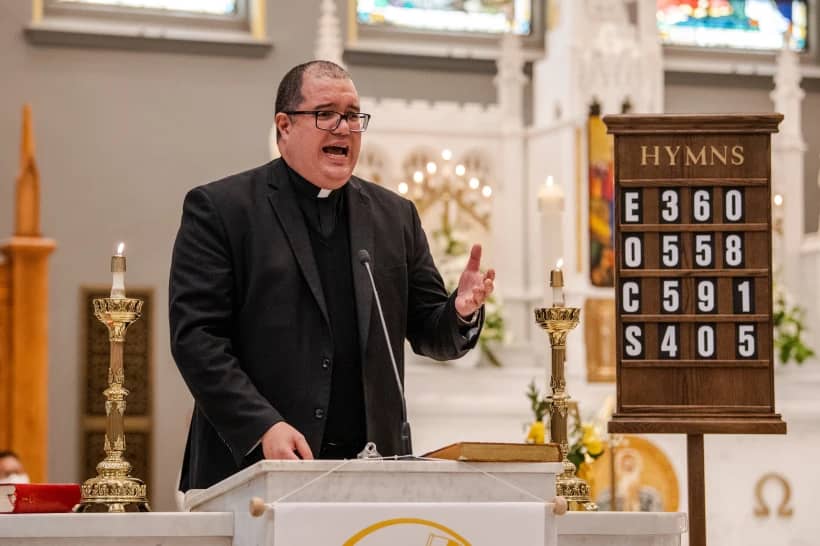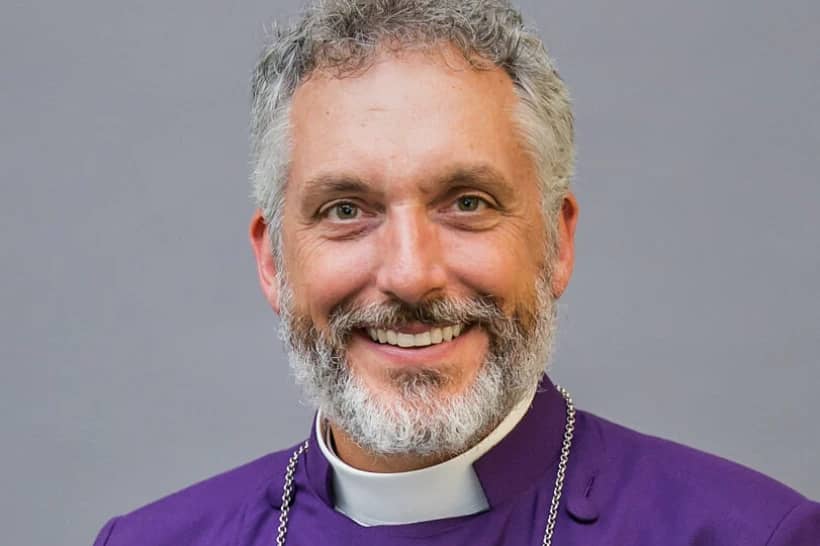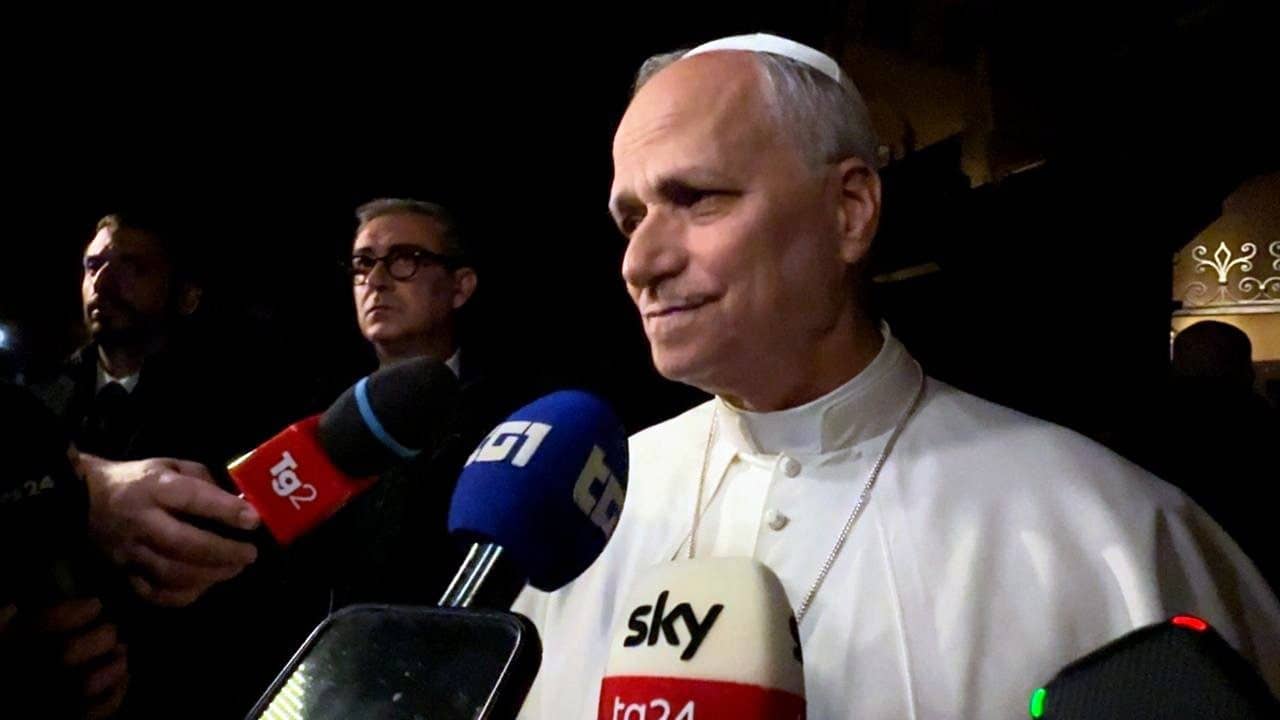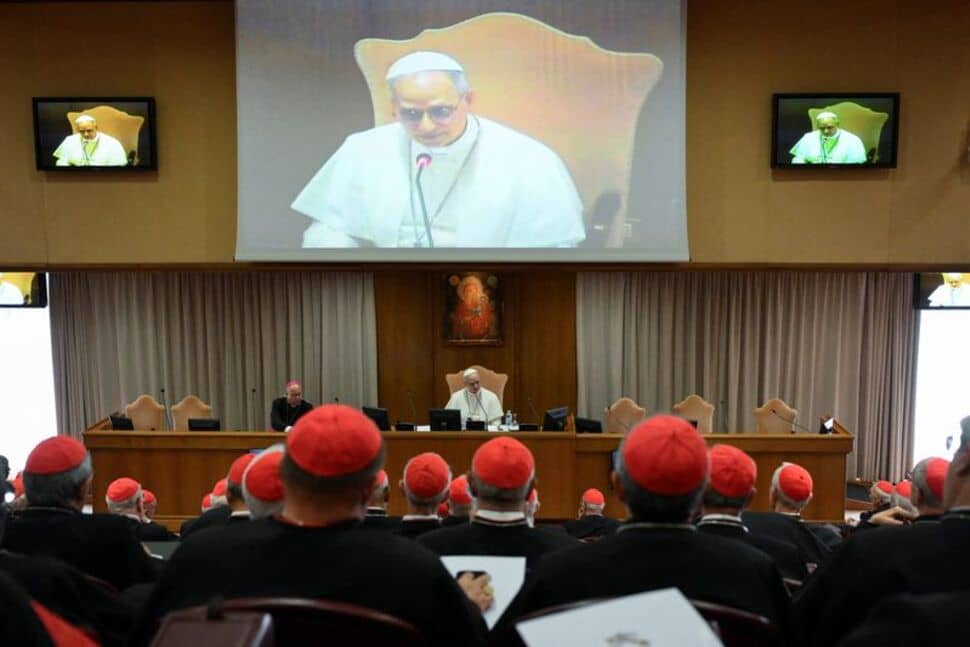BOLOGNA, Italy — While the rest of Italy commemorates the feast of St. Francis of Assisi Saturday, the city of Bologna does its own thing, celebrating the feast of St. Petronius, a bishop during the Roman Empire’s decline.
The Feast of St. Petronius incorporates various artistic performances, this year including salsa dancing and an orchestral concert of Vivaldi’s “Gloria,” on a stage set up in the city’s main square, Piazza Maggiore. The performance space is in front of one of Bologna’s most famous churches: the Basilica of St. Petronius.
Because of its central position and enormous dimensions, the basilica is often mistaken for the city’s cathedral, but its role as a symbol of the city goes deeper than its place on the landscape. The people of Bologna began building the church in the late 1300s and collectively owned it until 1929, according to Anna Brini, a tour guide.
At the time of the church’s construction, Brini said, “Bologna was an independent city-state, not under the control of a noble family or the Vatican. In that moment of freedom, Bologna wanted to celebrate by constructing a church that would be a symbol of its liberty.”
Bologna is relatively unique in Western history for its citizens’ ability to cooperate, as a true community, according to Father Marco Baroncini, secretary of the general services office of the Archdiocese of Bologna.
“Bologna has the first document in the world regarding freedom for slaves, and it’s the first political example of a commune,” he said. “For many years, that commune made money through its ability to cooperate without internal conflict. Bologna’s Towers, the city’s most famous landmark, are really signs of war: The families that constructed them wanted to demonstrate their great wealth in comparison to others. But the foundation of Bologna’s peacetime was always the commune’s ability to work together.”
From an artistic point of view, Father Baroncini added, “the Church of St. Petronius is an incredible beauty. It’s also one of the largest churches in the world,” covering a length of over 430 feet and a width of almost 170 feet.
At its conception, the basilica was, in fact, supposed to be the largest church in the world. What exists today is just the longest of the four branches that should have made up a structural cross. According to legend, those plans were nipped in the bud by Rome’s bishop at the time — Pope Pius IV; apparently he did not want his own basilica — St. Peter’s, currently the largest Catholic church on earth — to be upstaged. Another explanation for the halt in church construction is that a struggling economy in the 1500s prevented the Bolognese people from continuing to fund the project.
What is known with greater certainty is that Pope Pius in 1562 ordered the building of a university building directly adjacent to the basilica, which meant no future construction could ever occur.
Details about St. Petronius’ life are few and far between.
According to Brini, he was born in the late 4th or early 5th century into a well-to-do family of the Roman elite, likely in the Gallic Empire of modern-day France. He converted to Christianity, entered religious life, and made a pilgrimage to Jerusalem before arriving in Bologna, where he was named bishop in 431. At the time, Bologna (from “Bononia,” Latin for “the Beautiful”) was known as a central hub along the Italian peninsula.
Petronius lived during a period of great turmoil, in part because the Roman Empire had broken into two separate empires in the year 395. Due to political, social and economic upheaval, Brini said, Bologna “was an impoverished city by 431 AD, abandoned by the Romans and then plundered and destroyed by arriving barbarians.” It was at this point that Petronius, as official shepherd of Bologna, was charged with funding the city’s upkeep.
Legend has it that, to make money for bolstering up the struggling city, Petronius built a church in Bologna replicating Jerusalem’s Holy Sepulcher. This was apparently an attempt to attract moneyed Christian pilgrims to Bologna, who might otherwise have taken the longer, more expensive, and far more dangerous trip from Europe to the Holy Land to see the shrine, built by Emperor Constantine, where Jesus Christ is believed to have been crucified and buried.
Bologna’s Sepulcher, located 540 yards from St. Petronius’ Basilica, is now part of a large complex of seven churches collectively referred to as the Basilica of St. Stephen. The Sepulcher incorporates into its structure a small pagan temple, dedicated to Isis; like all temples to the Egyptian goddess, the temple was built over a well fed by an underground stream. Nearby is the only hill in Bologna’s modern-day city limits. To a strategic mind, according to Brini, this locale recalls Jerusalem itself: the temple representing the old world that Christ vanquished; the stream a miniature Jordan River; and the hill none other than the Mount of Olives.
Petronius allegedly imported relics from the Holy Land for the Sepulcher. These relics include a column, made of marble found only in the Middle East, to represent the one used during the flagellation of Christ; and a bowl, which is said to be where Pilate washed his hands of Christ’s trial.
Irrespective of these myths’ accuracy — which provide a colorful account of Petronius’ fundraising — Bologna’s patron is credited with philanthropic work. His most important legacy derives from his charitable work for Bologna’s poorest, whom he provided with food and money. He was also attentive to the city’s urban-planning needs, constructing houses and thus building up an entire city quarter.
“Petronius wasn’t the first bishop of Bologna,” Father Baroncini said, “but he is one of the most important ones because he helped build the city. Petronius’ festival is both religious and civic — because this saint attended to the city’s poorest.”

















